19 products
- Red Wine
- Nebbiolo
- Organic, Vegan-Friendly
- Dry
- Medium Bodied
- 750ml
- 14.5% alc./vol
About the Winery
Réva
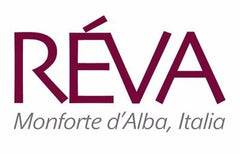
Réva is a winery based in Monforte D’Alba, within the Langhe area, in Piedmont, west northern Italy. Its aim is to bring the most brilliant young people of the area together, entrusting them with the task of expressing themselves in the most creative and professional way possible. This is Réva’s Wave, a dynamic team that represents the new Langhe generation, in constant communication with tradition, without the fear of reinterpreting it.
Today the vineyard sites which spread over 4 villages, Monforte D’Alba, Serralunga D’Alba, Novello and Barolo are all managed directly with the entire agronomic work done manually. Strong sustainable vineyards conduction, certified organic, they believe that their biggest challenge is not inventing anything but just define and express the beauty of the land where they live.
Behind every glass of wine there is an expression, expression of terroir, varietal, the varietal is for them everything, indigenous, they speak of the land and, last but not least, passion for what they do. Simply as that.
Press Reviews
Wine Align
93 points - Michael Godel
This to me is a classic Barolo vintage captured with utmost care and respect by Réva. The 2018 Baroli are not likely going to amalgamate as the most obviously decadent or structured nebbioli but they can be timely reflections into the appellation. This is what the team at Réva has looked at, considered and coaxed from a wine that represents and by that I mean stands as a cross-sectional cuvée for their important set of vineyards. The 2016 Barolo is a great wine though its austerity means it’s still not functionally available and will serve a select few when it gets to the intended destination. In 2018 nebbiolo stands out bright, aromatic and clear, seasoned by wood, earth and herbs, linear, direct and transparent. The purity and functionality serve the people and does so with heart open wide, worn on a gifted, but never gilded sleeve. This is not a precious wine but do embrace the gift. Drink 2023-2031. Tasted May 2022.
- Red Wine
- Pinot Noir
- Sustainable
- Dry
- Residual Sugar: 2.00 g/l
- Medium Bodied
- 750ml
- 14.00% alc./vol
Press Reviews
The Real Review
95 Points - Bob Campbell
Deeply scented pinot noir with intense cassis, dark cherry/berry, vanilla and classy French oak flavours. Bright, youthful wine with power and energy. Accessible now but with good cellaring potential.
- White Wine
- Sustainable
- Dry
- Residual Sugar: 2.00 g/l
- Medium Bodied
- 750ml
- 13.50% alc./vol
Press Reviews
James Suckling
94 Points
Aromas of apple tart with brioche as well as toffee and butter cookie. Medium- to full-bodied with creamy texture and a creme caramel finish. Rich yet featherlight at the same time. Drink or hold.
- Sweet Wine
- Gros Manseng, Petit Manseng
- Natural, Organic, Vegan-Friendly
- Medium Bodied
- 750ml
- 12.00% alc./vol
About the Winery
Clos Lapeyre

This family farm was traditionally dedicated to mixed farming with livestock, small fruits and grapes which were taken to the local cooperative. From 1985 onwards, the estate was turned over exclusively to viticulture when Jean-Bernard Larrieu gave birth to Clos Lapeyre.
Clos Lapeyre is a 12 ha domain owned by the Larrieu family, in Jurançon, Southwest France. It is situated south of Pau, nestling on steep slopes facing the Pyrenees. The vineyards are planted on terraces at an altitude of 250 m. Jean-Bernard Larrieu makes the wines, and his aim is produce wines that express the specificity of the grape varieties and the soils (pebbly clay/limestone and silex). The wines are certified Organic.
- White Wine
- Chardonnay
- Organic
- Dry
- Medium Bodied
- 750ml
- 13% alc./vol
About the Winery
Domaine du Château de La Chaize
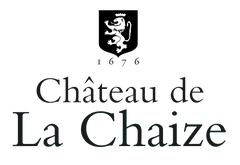
Château de La Chaize is among the oldest, most historic estates in Burgundy’s Beaujolais region. Cared for by the same family for nearly three and a half centuries, the estate has been passed on to new owners, the Gruy family, who are equally committed to managing the estate with the utmost care, while implementing an ambitious environmental plan. Among the many initiatives is the conversion of all vineyards to organic farming, the adoption of precision viticulture, reducing carbon their carbon footprint, and recycling every by-product from viti- and vinicultural activity, to achieve zero waste.
Founded in 1670 by the seneschal of Lyon François de la Chaize d’Aix, the main Château de la Chaize building and gardens were completed by Jules-Hardouin Mansart and André le Nôtre, respectively architect and gardener of the Château de Versailles. Château de la Chaize is among the oldest, most historic estates in Burgundy’s Beaujolais region. Boasting over 250 acres of vineyards, it is also one of the largest. It is today considered one of the most innovative estates in Burgundy. Among its forward- thinking practices is the adoption of eco-friendly farming techniques, commonly referred to as Agriculture Raisonnée. Chemical treatments have been reduced to a strict minimum, for example, and the growing of grass between rows has been re-introduced to enrich the soil and reduce erosion.
Press Reviews
Wine Enthusiast
90 points
This Beaujolais estate also has vines in Pouilly-Fuissé to the north. The wine has good minerality as well as ripe apple and spice. Lightly wood aged, it is a rich, structured and fruity. Drink the wine from late 2020. - Roger Voss
- White Wine
- Chardonnay
- Organic, Sustainable
- Dry
- Residual Sugar: 2.00 g/l
- Medium Bodied
- 750ml
- 13.00% alc./vol
Press Reviews
Decanter World Wine Awards
97 Points
100% Chardonnay. After a Platinum win for Elgin Chardonnay last year, we all suspected it was only a matter of time before this propitious combination of variety and region would make its way into our Top Fifty. So it proved this year, as this high-sited (200m-450m), mountain-fringed zone in the Cape's deep, ocean-cooled south brought us one of the most memorable of this year's Chardonnay cohort. It's pale dawn-yellow in colour, with taut yet close-knit aromas that suggest plant sap, peeled vegetable and spring leaf as much as green fruits. The 11 months' oak provide an aromatic backdrop without obscuring vineyard character. On the palate, the wine is lean, shapely, intense: a cool waterfall of Chardonnay fruits which sweep seamlessly over the tongue, leaving it looking for more. Drinkability, refreshment and a unique regional style come together memorably here. Best in Show.
- White Wine
- Chardonnay
- Sustainable, Volcanic
- Dry
- Residual Sugar: 2.00 g/l
- Medium Bodied
- 750ml
- 13.00% alc./vol
Press Reviews
James Suckling
96 Points
Complexity and lots of stamina and verve here! Smoky lemons, nougat, ginger and flint provide a very flavourful palate. Intense and substantial on the palate, but still elegant and nuanced, with a hint of phenolics at the end. Long, focused finish. Think fine Meursault. Drink or hold.
Robert Parker
95 Points - Luis Gutiérrez
The 2020 Selección de Parcelas Los Primos Chardonnay was cropped from a warm and dry vintage, but in Traiguén in the south, it is not as warm as in the central valley of Chile. The grapes were harvested the first half of April; they harvested earlier and finished with more alcohol, still a moderate 13.5%, from a year of more body and rounder wines but without heat. The wine kept a pH of 3.16 and 6.9 grams of acidity. This also makes the wine a little more Burgundian, more Meursault than Chablis or Puligny, tasty, spicy with a tad more oak (all the new barrels for white are 400-liter ones, 38% of them new in 2020), because in warmer years there is a little more extraction from the oak. This is the warmest vintage so far, but the wine is still bone dry and there is no ripeness; but there's more weight and width. The wines have to show the differences of the climate conditions each year... 4,069 bottles were filled in July 2021.
- Red Wine
- Nebbiolo
- Biodynamic, Natural, Organic, Vegan-Friendly
- Dry
- Medium Bodied
- 750ml
- 14% alc./vol
About the Winery
Punset

While the vineyards that form Punset have been farmed by the Marcarino family for generations, it is truly thanks to Marina and her incredible energy that the estate is how it is nowadays. In the 1980s, she decided to pursue organic farming – a demanding choice that was rewarded by becoming the first estate to receive the organic certification in Italy. Her passion for the soil and the environment led her to embrace biodynamics and the agronomic philosophy of Manasobu Fukuoka. From one of the healthiest vineyards in Italy, Marina crafts wines that brim with life, energy, and pure terroir.
Known for the very first certified organic Barbaresco of Italy, Marina continues to show the world that you can preserve tradition and think of the future simultaneously.
Press Reviews
James Suckling
92 points
This is tasting beautifully now with strawberry, cedar, and hazelnut character. It’s medium-bodied with firm tannins that need to soften. But very pretty already. Drinkable now, but better in two or three years. Try after 2024.
Wine Enthusiast
90 points
Blue flower, underbrush and wild herb aromas mix with a whiff of tobacco. Racy and linear, the palate offers sour cherry, star anise and a hint of rusted iron alongside taut, close-grained tannins that leave a drying finish.
Wine Align
93 points - Michael Godel
Wildly aromatic of wild strawberry and sweet bitters liqueur. Highly glycerin and textural with grippy and elastic stretched tannins. A huge Neive Barbaresco with time definitely secure on its side. Drink 2022-2030. Tasted January 2020.
- White Wine
- Sauvignon Blanc, Sauvignon Gris
- Organic, Vegan-Friendly
- Dry
- Medium Bodied
- 750ml
- 13% alc./vol
About the Winery
Réva

Réva is a winery based in Monforte D’Alba, within the Langhe area, in Piedmont, west northern Italy. Its aim is to bring the most brilliant young people of the area together, entrusting them with the task of expressing themselves in the most creative and professional way possible. This is Réva’s Wave, a dynamic team that represents the new Langhe generation, in constant communication with tradition, without the fear of reinterpreting it.
Today the vineyard sites which spread over 4 villages, Monforte D’Alba, Serralunga D’Alba, Novello and Barolo are all managed directly with the entire agronomic work done manually. Strong sustainable vineyards conduction, certified organic, they believe that their biggest challenge is not inventing anything but just define and express the beauty of the land where they live.
Behind every glass of wine there is an expression, expression of terroir, varietal, the varietal is for them everything, indigenous, they speak of the land and, last but not least, passion for what they do. Simply as that.
- Red Wine
- Cabernet Franc
- Organic, Vegan-Friendly
- Dry
- Medium Bodied
- 750ml
- 13.50% alc./vol
About the Winery
Château de Parnay
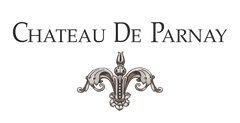
Château de Parnay is the flagship of the AOC Saumur Champigny. The property is located along the Loire river, classified as UNESCO World Heritage, on the most reputable clay and limestone terroirs of the appellation. The historic property was taken over by Mathias Levron & Régis Vincenot in 2006 with the aim of restoring the nobility of this special place.
Drawing their strength from the authenticity of their values, they now cultivate 50 hectares of vines with the aim of producing exceptional wines in a way that respects the environment. They have been certified organic since 2013 and are about to be certified biodynamic too.
The Clos of Chemin des Murs is the jewel of the property! Coming from the imagination of it's orginal owner, Antoine Cristal, this Clos was built, planted and cultivated according to an unprecedented technique. On this half hectare of Chenin Blanc, each vine was planted on the north face of a stone wall. Through a hole in the stone the vine crosses through the wall and allowing the grapes to grow facing the southern sunshine. The vine is said to have its 'foot in the cool and belly in the sun'.
Press Reviews
Wine Align
93 points - Megha Jandhyala
This is a concentrated, complex, gracefully balanced cabernet franc. Notes of ripe red plums, blackberries, dark cherries, tobacco, dried leaves, and violets are interwoven here to form an elegant, engaging, and varietally representative flavour profile. The palate is densely flavoured but lithe, with fine-grained tannins and refreshing acids. The finish is long, layered, and captivating. Though it can be enjoyed now, I would cellar this for 2-3 years. Tasted January 2024.
93 points - David Lawrason
This is a serious cab franc indeed - not so much in terms of weight and power, but in its complexity, poise and length. It’s a deeply coloured for franc. The nose shows fine, ripe raspberry, perfectly pitched by fresh herbs, tobacco and violet. It is loosely structured mid-palate, and a touch warm, with slightly green tannin. The length is excellent. I would age it a year or three. Tasted January 2024
92 points - John Szabo, MS
Silky and refined, elegant but dense, this Saumur Champigny (cabernet franc) is a substantial and serious wine, with a high degree of textbook regional character, complete with a touch of green-herbal, varietal flavour. Tannins are fine and dusty, acids gently salty, and length good to very good. I'd suggest another year or two in the cellar to further refine the texture and develop complexity - potential I think is high. Tasted January 2024.
- White Wine
- Listán Blanco
- Sustainable, Vegan-Friendly, Volcanic
- Dry
- Medium Bodied
- 750ml
- 13% alc./vol
About the Winery
Viñátigo

Juan Jesús is a proud native of Tenerife and the fourth generation of growers. During the thirty years that he's overseen Bodegas Viñátigo, he has considerably increased its holdings, planting varieties that he and his team recuperated from near extinction.
Driven by passion and love for his homeland, Juan decided to revive and work to save the native grape varieties that were brought to the Canary Islands by the conquers back in the 15th century and that had survived on the islands for centuries. He is a hero of contemporary Canarian viticulture. The wealth of knowledge that his work has created has helped underpin the significant expansion of wine styles that are now available throughout the archipelago, and his wines have achieved a calibre of class that many doubted the Canaries would ever produce again. (The Epic Wines of the Canary Islands, written by Santo Bains).
Press Reviews
Robert Parker
92 points
The 2022 Camino de La Peña is one of the new single-vineyard certified wines from the DOP Islas Canarias, Tenerife appellation. It was produced with Listán Blanco grapes from a plot of vines in Altos de Icod in the Icod Valley in the northeast of Tenerife and pruned in the traditional parral, or pergola, way on terraces on young volcanic (basalt) soils with sand and minerals. The juice from the pressing with part of the stems was let to settle and fermented with indigenous yeasts in stainless steel, where the wine matured with static lees (not stirred) for nine months. Despite the moderate 12.7% alcohol, this has a riper nose than the other whites, with notes of yellow fruit, plums and peach, and a gentle and polished palate with soft acidity and a bitter twist in the finish. 2,835 bottles were filled in August 2023.
Viñátigo, the project from Juan Jesús Méndez, was one of the pioneers of the local varieties in the Canary Islands, where he's been recovering forgotten varieties since 1990. He's now joined by his son Jorge, who is giving a more modern profile to the wines. In 2017, there was a new range of single-vineyard and lieu-dit wines that go one step beyond in 2022, with three new whites from the north of Tenerife. They are all produced with Listán Blanco from different zones and altitudes, climates and soils. They have 12 hectares of vines in the north and northeast of Tenerife, and their production averages 150,000 bottles per year.
Published: Nov 30, 2023
- White Wine
- Listán Blanco
- Sustainable, Vegan-Friendly, Volcanic
- Dry
- Medium Bodied
- 750ml
- 13% alc./vol
About the Winery
Viñátigo

Juan Jesús is a proud native of Tenerife and the fourth generation of growers. During the thirty years that he's overseen Bodegas Viñátigo, he has considerably increased its holdings, planting varieties that he and his team recuperated from near extinction.
Driven by passion and love for his homeland, Juan decided to revive and work to save the native grape varieties that were brought to the Canary Islands by the conquers back in the 15th century and that had survived on the islands for centuries. He is a hero of contemporary Canarian viticulture. The wealth of knowledge that his work has created has helped underpin the significant expansion of wine styles that are now available throughout the archipelago, and his wines have achieved a calibre of class that many doubted the Canaries would ever produce again. (The Epic Wines of the Canary Islands, written by Santo Bains).
Press Reviews
Robert Parker
93 points
The 2022 Lomo de la Era, another of the new single-vineyard certified wines from the DOP Islas Canarias, Tenerife appellation, was produced with Listán Blanco grapes, in this case from a cordón trenzado plot of vines in the western part of the Orotava Valley on sandy, silty and basalt soils. The juice from the pressing with part of the stems was let to settle and fermented with indigenous yeasts in concrete, where the wine matured with static lees (not stirred) for nine months. It has moderate ripeness and alcohol (12%) with a mixture of floral, fruit and soil notes and an austere palate with dusty minerality, vibrant and pungent flavors and a clean finish. 2,320 bottles were filled in July 2023.
Viñátigo, the project from Juan Jesús Méndez, was one of the pioneers of the local varieties in the Canary Islands, where he's been recovering forgotten varieties since 1990. He's now joined by his son Jorge, who is giving a more modern profile to the wines. In 2017, there was a new range of single-vineyard and lieu-dit wines that go one step beyond in 2022, with three new whites from the north of Tenerife. They are all produced with Listán Blanco from different zones and altitudes, climates and soils. They have 12 hectares of vines in the north and northeast of Tenerife, and their production averages 150,000 bottles per year.
Published: Nov 30, 2023
92 points
The 2022 Camino de La Peña is one of the new single-vineyard certified wines from the DOP Islas Canarias, Tenerife appellation. It was produced with Listán Blanco grapes from a plot of vines in Altos de Icod in the Icod Valley in the northeast of Tenerife and pruned in the traditional parral, or pergola, way on terraces on young volcanic (basalt) soils with sand and minerals. The juice from the pressing with part of the stems was let to settle and fermented with indigenous yeasts in stainless steel, where the wine matured with static lees (not stirred) for nine months. Despite the moderate 12.7% alcohol, this has a riper nose than the other whites, with notes of yellow fruit, plums and peach, and a gentle and polished palate with soft acidity and a bitter twist in the finish. 2,835 bottles were filled in August 2023.
Viñátigo, the project from Juan Jesús Méndez, was one of the pioneers of the local varieties in the Canary Islands, where he's been recovering forgotten varieties since 1990. He's now joined by his son Jorge, who is giving a more modern profile to the wines. In 2017, there was a new range of single-vineyard and lieu-dit wines that go one step beyond in 2022, with three new whites from the north of Tenerife. They are all produced with Listán Blanco from different zones and altitudes, climates and soils. They have 12 hectares of vines in the north and northeast of Tenerife, and their production averages 150,000 bottles per year.
Published: Nov 30, 2023
- White Wine
- Chardonnay
- Dry
- Residual Sugar: 2.00 g/l
- Medium Bodied
- 750ml
- 13.50% alc./vol
Press Reviews
Vinous Media
90 Points - Neal Martin
The 2022 Chablis Bougros Grand Cru is aged for 16 months in stainless steel and 500 litre barrels. It is pretty neutral on the nose and doesn't really engage the senses as I would have liked. The palate is balanced with a fine bead of acidity. It's taut and fresh, with a touch of sour lemon towards the finish. It's not bad, although its more Premier Cru than Grand Cru, to be honest. Tasted blind at the BIVB tasting in Chablis.
- White Wine
- Chardonnay
- Sustainable
- Dry
- Residual Sugar: 2.00 g/l
- Medium Bodied
- 750ml
- 13.00% alc./vol
About the Winery
Groupe Bellene
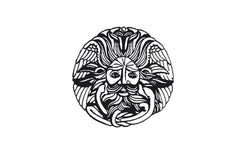
Led by Nicolas Potel in Beaune, Groupe Bellene is composed of the négociant arm Maison Roche de Bellene, the winery arm Domaine de Bellene, and a special back-vintage series under the Collection Bellenum label.
- Maison Roche de Bellene offers a complete range of wines, with an emphasis on individual terroirs from old vines of more than 40 years. All of the growers that Nicolas works with are either organic certified or sustainably farmed.
- Domaine de Bellene represents the wines that are produced and bottled from Nicolas Potel's private vineyard holdings.
- Collection Bellenum is a back vintage series that Nicolas Potel sourced from his friends in the region, offering a magnificent selection of bottled history. The wines have moved only twice in their lives, from the original cellar to Potel's and now to yours!
Nicolas Potel grew up at Volnay's Domaine Pousse d'Or, where his father worked. He trained abroad and returned home in 1996 to build a négociant business and started Maison Nicolas Potel, where he sourced grapes from good parcels, often working with the growers to improve the quality. By 2002, he was making 120 wines from 50 different appellations, and the rest is history!
- Red Wine
- Pinot Noir
- Sustainable, Volcanic
- Dry
- Residual Sugar: 2.00 g/l
- Medium Bodied
- 750ml
- 13.50% alc./vol
About the Winery
Vinos Baettig

Francisco Baettig and Carlos de Carlos have been friends for more than 20 years and share a passion for high-quality wines that are genuine and connected to the land where they are made.
"A promising project in a wine region that is the future of high-quality Chilean wines" - Patricio Tapia, Descorchados
Press Reviews
James Suckling
96 Points - Zekun Shuai, Senior Editor
A serious pinot from Francisco Baettig that shows tension and firmness. Rose petals, stemmy herbs, tea leaves and orange rind. Really juicy and bright with chalky tannins. Firm, structured and pretty full-bodied but nothing heavy. Mouthwatering and long. 3,000 bottles made. 20% whole clusters. 14 months aged in 300-liter oak barrels, of which 41% is new oak. Drink or hold.
Vinous Media
95 Points - Joaquín Hidalgo
The 2022 Pinot Noir Viñedo Los Primos originates from Traiguén in the Araucanía region. Aged for 14 months in French oak barrels, it presents aromas of cherry, sour cherry, black tea and orange peel, with subtle undertones of damp earth and lavender layered with cedar and cinnamon. Dry, slightly chalky and taut on the palate, the wine offers a vibrant and lightly structured mouthfeel, culminating in an intense and enduring finish. This is a serious Pinot Noir crafted with the precision and deep understanding of both stylistic nuances and terroir expression.
- White Wine
- Chardonnay
- Sustainable, Volcanic
- Dry
- Residual Sugar: 2.00 g/l
- Medium Bodied
- 750ml
- 13.50% alc./vol
About the Winery
Vinos Baettig

Francisco Baettig and Carlos de Carlos have been friends for more than 20 years and share a passion for high-quality wines that are genuine and connected to the land where they are made.
"A promising project in a wine region that is the future of high-quality Chilean wines" - Patricio Tapia, Descorchados
Press Reviews
James Suckling
98 Points - Zekun Shuai, Senior Editor
Pure mineral notes but a lot of depth here, with flinty oyster shells, crushed rock, lemon zest and a hint of cream. Broad but pure on the palate, driven by a bright streak of saline acidity. Really gastronomic and serious, with a full body but mineral water-like purity at the end. Another sensational Los Primos. According to winemaker Francisco Baettig, 2022 is moderately cool in Traiguén. A small production due to the frost. Picked around April 10. Thirteen months’ aging in 300- to 400-liter barrels, of which 37% is new.
Vinous Media
97 Points - Joaquín Hidalgo
The 2022 Chardonnay Viñedo Los Primos originates from Traiguén in the Araucanía region. Aged for 13 months in French oak barrels (37% new), it displays a green colour with a yellowish sheen. Aromas of creamed corn and cedar emerge on the nose, accompanied by hazelnut, oak and ginger nuances. Dry, rich and fairly rich on the palate it develops a fatty and oily mouthfeel that adds depth and volume without heaviness. The 13.5% alcohol content contributes to an overwhelming mouthfeel but its balanced by taut acidity , resulting in a long-lasting flow. Compared to other vintages, the 2022 offers a more finely tuned balance.
- Red Wine
- Pinot Noir
- Sustainable, Volcanic
- Dry
- Residual Sugar: 2.00 g/l
- Medium Bodied
- 750ml
- 13.50% alc./vol
About the Winery
Vinos Baettig

Francisco Baettig and Carlos de Carlos have been friends for more than 20 years and share a passion for high-quality wines that are genuine and connected to the land where they are made.
"A promising project in a wine region that is the future of high-quality Chilean wines" - Patricio Tapia, Descorchados
Press Reviews
Wineanorak Global Wine Journal
93 Points - Jamie Goode
There’s nice spicy savoury detail here as well as ripe berry and cherry fruit. Bold and rich with good structure and firm berry fruits. A big style of Pinot with some oak in the mix. It’s ageing nicely
- White Wine
- Chardonnay
- Sustainable, Volcanic
- Dry
- Residual Sugar: 2.00 g/l
- Medium Bodied
- 750ml
- 13.50% alc./vol
About the Winery
Vinos Baettig

Francisco Baettig and Carlos de Carlos have been friends for more than 20 years and share a passion for high-quality wines that are genuine and connected to the land where they are made.
"A promising project in a wine region that is the future of high-quality Chilean wines" - Patricio Tapia, Descorchados
Press Reviews
Wineanorak Global Wine Journal
94 Points - Jamie Goode
Complex but still fresh with some toast and honey, as well as ripe lemon and melon fruit with some orange peel character and a touch of hazelnut. Lovely depth and intensity here with nice bright acidity on the finish. This is evolving in nice ways.
- Red Wine
- Cabernet Franc, Merlot
- Dry
- Medium Bodied
- 750ml
- 13.50% alc./vol
About the Winery
Château du Moulin Noir
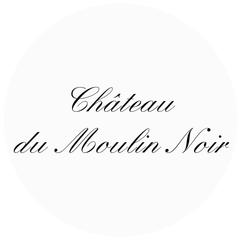
This beautiful right-bank Bordeaux estate consistently produces high-value, elegant and classic Merlot dominant wines and is considered one of the most famous Château of this appellation. Located in Montagne-Saint-Emilion, Château Moulin Noir consists of seven hectares of vineyards on clay and limestone soils.
This château owes its name to a family feuddating back to the Middle Ages. Two brothers were arguing about their father’s legacy with the youngest brother being incredibly jealous that everything went to the elder. He was so jealous that he burnt the château to the ground - Moulin Noir translates to “blackened Mill”.
Press Reviews
Wine Align
91 points - Sara d'Amato
This notably complex right bank blend from a satellite appellation of Saint-Emilion offers appealing savory notes along with a mineral, iron component as well as licorice spice. The oak treatment is wonderfully integrated with wood spice elevating the bright red fruit. Harmoniously matured, graceful and very elegant. The staying power of the finish is impressive. Drinking very well now. Tasted January 2019.



















